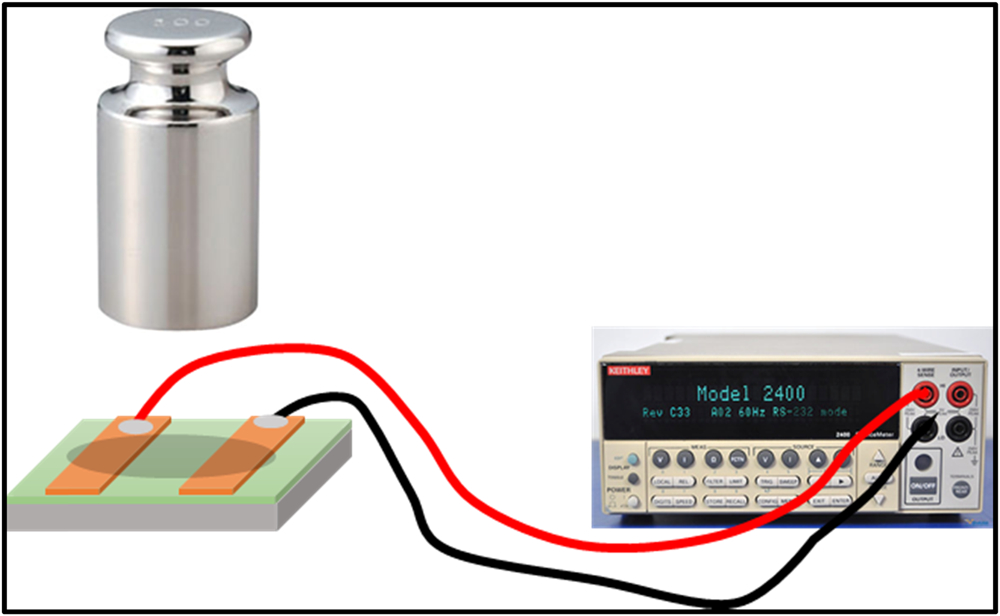
Case Study
The First Dual-mode Piezotronics-based Force Sensor
A newly developed thin-film transistor based on the “piezo-gating effect” shows dual-mode behavior and a high sensitivity to piezotronic strain
The emergence of piezotronics as a new frontier in technology has led to the development of piezotronic force sensors. However, the influence of the “piezo-gating effect” phenomenon on their force sensitivity is unclear. In a new study, researchers from NCKU, Taiwan have now reported the first thin-film piezo-gated transistor that works in dual mode along with an analytical model to explain its workings. Their breakthrough could guide the development of next-generation piezotronic force sensors.
The piezoelectric effect is the ability of certain materials to generate an electric charge when a force or strain is applied to them. These materials, known as piezoelectric materials, are becoming extremely useful as the need for compact and energy-efficient force sensors keeps growing with the rise of Internet of Things and Industry 4.0. Accordingly, piezotronics has emerged as a new technological frontier with applications such as structural health monitoring in civil engineering and human-machine interface devices.
Piezotronic force sensors are typically governed by either a strain-induced “Schottky barrier height (SBH) modulation” or by a “piezo-gating effect” that redistributes the charge carriers in an induced piezoelectric field. However, while SBH-based piezotronic devices have been well-explored, piezo-gating based devices remain relatively less understood. This, in turn, has limited the fabrication of piezo-gated transistors, the basic building block of all electronics. Additionally, the piezo-gating effect is often confused with another phenomenon called “piezoresistive effect” owing to their co-existence and similarity in response. To exploit the potential of the piezo-gating effect to its fullest, we, therefore, need to understand it better.
In a new study made available online on 25 January 2022 and published in Volume 95 of Nano Energy in 30 April 2022, researchers from National Cheng Kung University (NCKU) in Taiwan have now reported for the first time a “dual-mode” piezo-gated thin-film transistor (PGTFT) along with an analytical model explaining its mechanism in depth. The PGTFT exhibits an unprecedented operation between two modes, namely depletion and accumulation, and a record gauge factor (ratio of relative change in current to mechanical strain) of 2780, indicating its extreme sensitivity.
“PGTFTs that rely solely on piezo-gating effect are essential for developing advanced piezotronic devices. But, most PGTFTs reported so far have shown indistinct piezo-gating effect through SBH modulation induced by piezoelectric fields, and can detect only one-dimensional strain,” says Prof. Chuan-Pu Liu, the corresponding author of the study.
In their work, the researchers used zinc oxide (ZnO) to fabricate the thin-film transistors owing to the versatile piezoelectric and semiconductor properties of ZnO. The charge carrier concentrations in the ZnO thin films were varied in a controlled manner by changing the gas used during their preparation. The thin films were then fully characterized and used to prepare two distinct PGTFT configurations.
The team tested the current-voltage characteristics of the PGTFTs by subjecting them to strain and analyzed the results both analytically and using numerical simulations. Additionally, they explored the effect of changing carrier concentrations on the depletion and accumulation modes of the PGTFTs to gauge the influence of the piezo-gating effect.
The team found that increasing the strain on the PGTFT reduced the current in the top electrode while increasing it in the bottom electrode. This happened due to the movement of electrons from the top to the bottom in response to the force, creating a depletion at the top and an accumulation of electrons at the bottom. This, in turn, affected the output current and showed the co-existence of piezo-gating effect and piezoresistive effect, with the piezo-gating effect being dominant in their design.
Additionally, the carrier concentration dependence revealed, both experimentally and analytically, that the gauge factor is highly sensitive to the carrier concentration, with the experimental results showing a 44% enhancement in the gauge factor.
“The analytical model we proposed explains the workings of the PGTFT perfectly, showing agreement with the data as well as simulations. These findings, in turn, will pave the way for the development and application of multi-dimension strain-sensing PGTFTs,” says Prof. Liu. These applications could range from compact force sensors to the development of novel human-machine interfaces that are compact, cost-effective, and less power-hungry.
We may not be too far away from a piezotronics revolution!
Reference
AuthorsJit Dutta a, Chuan-Pu Liu a, b
Analytical and experimental investigation of dual-mode piezo-gated thin film transistor for force sensors
Nano Energy
Affiliations
a Department of Materials Science and Engineering, National Cheng Kung University
b Hierarchical Green-Energy Materials (Hi-GEM) Research Center, National Cheng Kung University
Key Academics
About Professor Chuan-Pu LiuChuan-Pu Liu is a Distinguished Professor in the department of Materials Science and Engineering at the National Cheng Kung University (NCKU) since 2012. He received his Ph.D. from University of Cambridge, UK in 1999 and did his post-doc at the University of Illinois at Urbana Champaign, USA from 1998-2000. He joined NCKU as Assistant Professor in 2000.